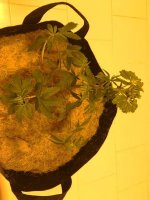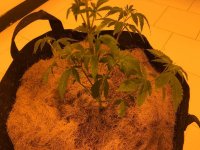Amazing improvement
Amazing improvement
The Ca Foliar definitely seemed to get things really going. I made a solution of the first one jidoka posted but lowered the Mg back to 30. EC was around 1.5. Plants seem to be loving it and new growth looks very healthy.
I now understand what jidoka meant when he said once you see it you will know. With the 1.5 solution everything seems to be working well.
For the first ten days or so I was using Agsil at 0.2g/gal but after reading about how I would be sacrificing P for silicate I removed the agsil and just go with the CaNO3, MKP, and MgSO4 with micros and so far this had been great. Also this gets my pH to around 6.0-6.1 so I don't have to add any acid!
I'm thinking of doing some foliar with Agsil every now and then. Maybe spray a couple plants and see how each reacts.
I hope now I can have some consistency with veg and get these into 10gal pots and start some training.
Jidoka, that high P and Ca room looks amazing! Do you keep Ca at a high range almost through all of flower?
I appreciate the advice. I'm enjoying every bit of knowledge and enjoying the use of raw salts. Thanks everyone!
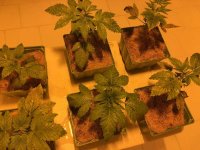
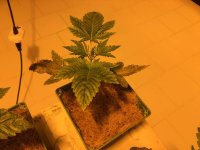
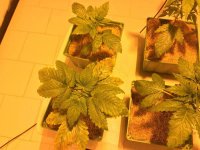
Amazing improvement
The Ca Foliar definitely seemed to get things really going. I made a solution of the first one jidoka posted but lowered the Mg back to 30. EC was around 1.5. Plants seem to be loving it and new growth looks very healthy.
I now understand what jidoka meant when he said once you see it you will know. With the 1.5 solution everything seems to be working well.
For the first ten days or so I was using Agsil at 0.2g/gal but after reading about how I would be sacrificing P for silicate I removed the agsil and just go with the CaNO3, MKP, and MgSO4 with micros and so far this had been great. Also this gets my pH to around 6.0-6.1 so I don't have to add any acid!
I'm thinking of doing some foliar with Agsil every now and then. Maybe spray a couple plants and see how each reacts.
I hope now I can have some consistency with veg and get these into 10gal pots and start some training.
Jidoka, that high P and Ca room looks amazing! Do you keep Ca at a high range almost through all of flower?
I appreciate the advice. I'm enjoying every bit of knowledge and enjoying the use of raw salts. Thanks everyone!






